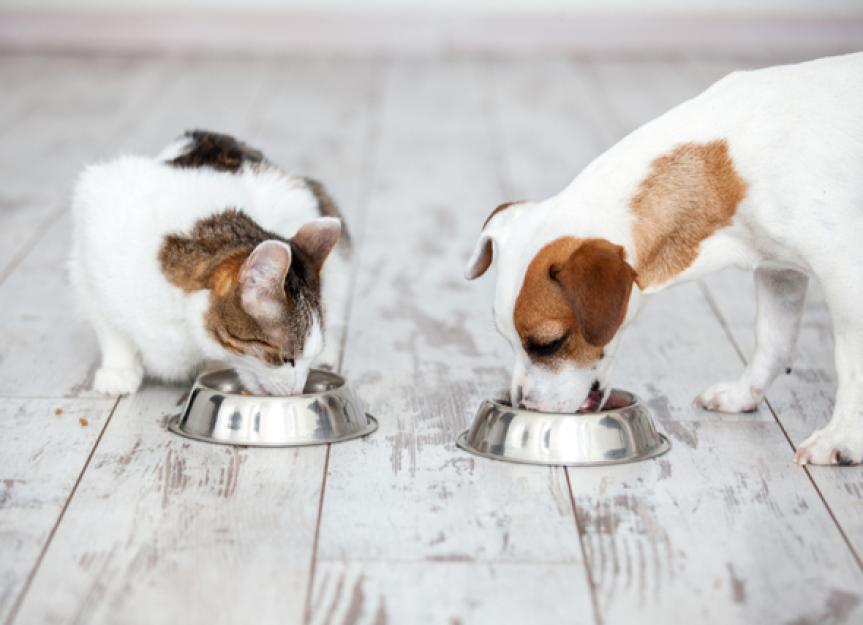A Veterinarian’s Perspective on Grain-Free Dog Foods and Grain-Free Cat Foods
A more recent trend in the pet food industry is the formulation of grain-free dog foods and grain-free cat foods that exclude foods like corn, wheat and soy from their ingredient list. This mirrors the latest “get healthy” human nutrition trend toward eliminating grains from the diet and unhealthy food additives such as gluten and high-fructose corn syrup.
While it may make sense for humans to adopt this diet, this cannot be directly applied in the same way to cat and dog nutrition. People may lose weight by substantially eliminating grain-based carbohydrates, but dogs and cats do not have the same metabolism or dietary requirements.
Will My Pet Lose Weight With a Grain-Free Food?
Recently, more than ever, we are seeing a significant rise in obesity in pets. A misconceived solution to this has been to feed grain-free pet foods because of the success of grain-free diets in human nutrition. Unfortunately, when grains are eliminated from dog or cat food, your pet won’t be getting more high-quality protein as many pet parents believe. Instead, pet food manufacturers may be adding more fat content to increase the palatability of the food, which actually can lead to unexpected weight gain in our pets. In private practice, we are seeing that almost all obese pets are eating grain-free foods, and pets that were once classified as overweight or borderline obese are now obese after changing to grain-free dog and cat food formulas.
Will My Pet Feel Better and Have More Energy Eating Grain-Free Food?
For decades, veterinary nutritionists and theWorld Small Animal Veterinary Association’s (WSAVA)Global Nutrition Committeehave been establishing pet food standards and necessary pet food formula requirements for what constitutes nutritionally complete pet food. Veterinarian-approved foods will have an AAFCO adequacy statement which confirms that the food is complete and balanced. Other wording such as "holistic," "premium" or "human grade" have no factual relevance when applied to pet food labels. The most well-established and well-respected pet food manufacturers in the industry have proven after many decades of research and development that the best foods for our pets provide specific amounts of macronutrients such as protein, fat, carbohydrates (including various grains) and vital micronutrients.
Carbohydrates play an important role in the energy requirements of a pet’s diet. Giving them more of one nutrient over another will actually create an unbalanced diet. The brands that veterinarians recommend areRoyal Canin Veterinary DietandHill's Prescription DietandPurina Pro Plan Veterinary Diets.
Will My Pet's Skin Problems Improve or Will Their Allergies Resolve From Grain-Free Food?
Many pets who start eating grain-free foods show an initial improvement in their skin and coat appearance, and in some cases, even an improvement in their gastrointestinal health may occur temporarily. Typically, this is attributed to the change in the quality of dog food and not necessarily the fact that the new food does not contain grains in the ingredients.
Food hypersensitivity or food allergies most commonly start in pets between the ages of 3 and 6 years old, depending on the particular pet. Most food-sensitive or food-allergic pets develop allergies to the proteins they have been exposed to in their diets over time. Very rarely does the carbohydrate portion (such as the grains or starches) of the food cause the allergy and/or major medical condition.
By Diana Drogan, DVM
Featured Image: Gladskikh Tatiana/Shutterstock.com
Help us make PetMD better
Was this article helpful?
